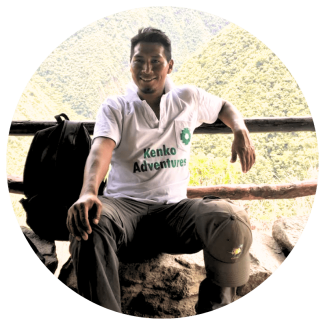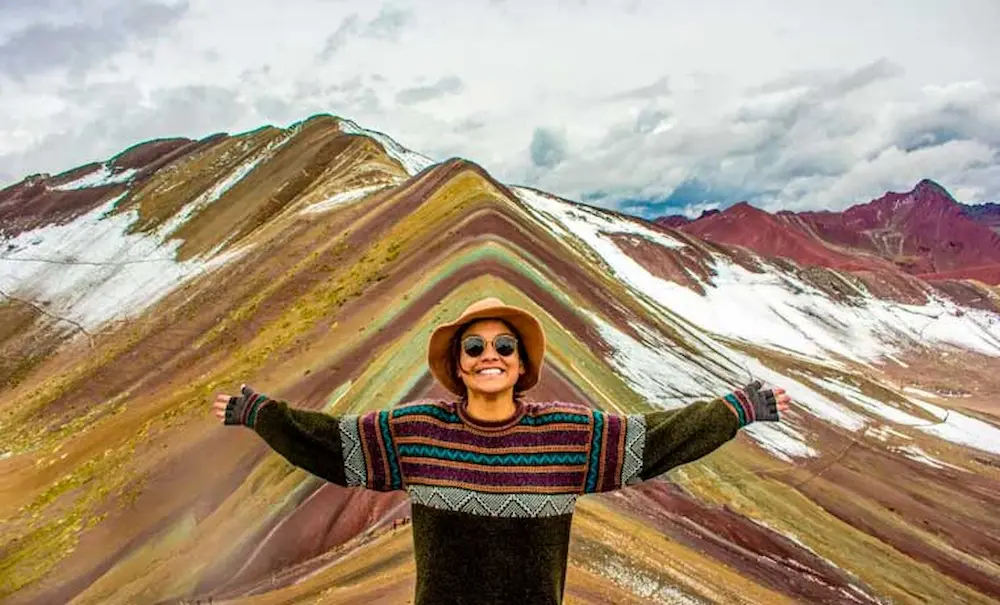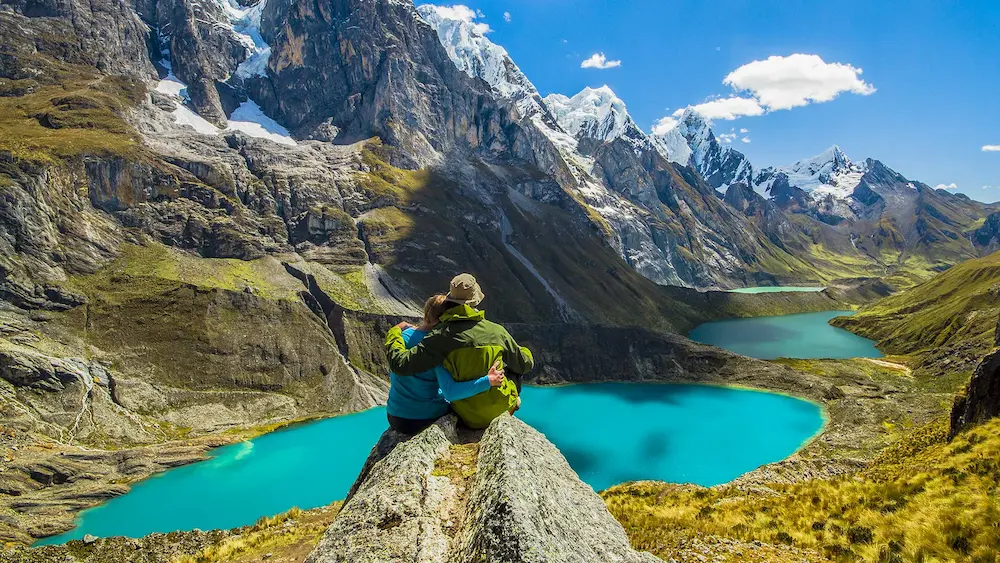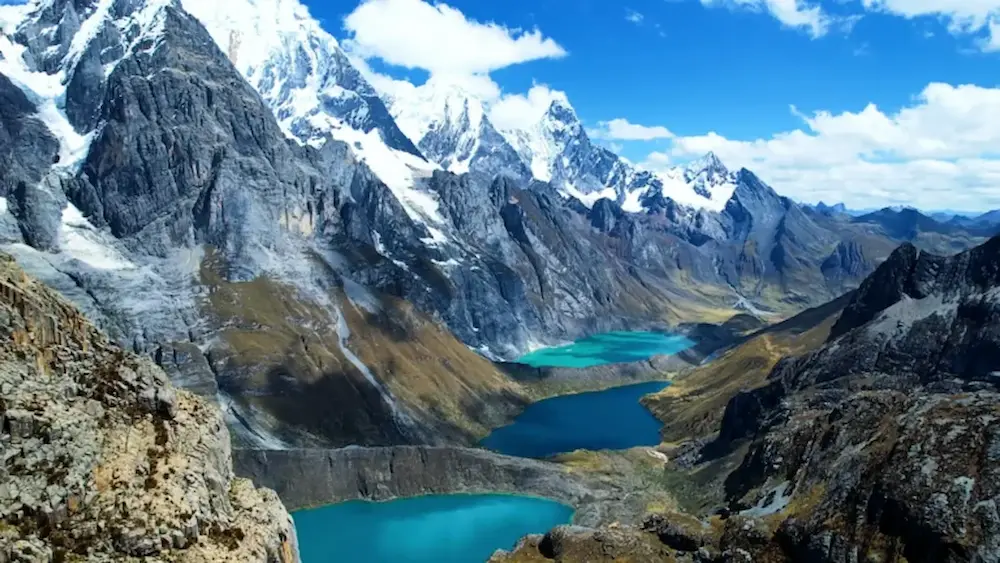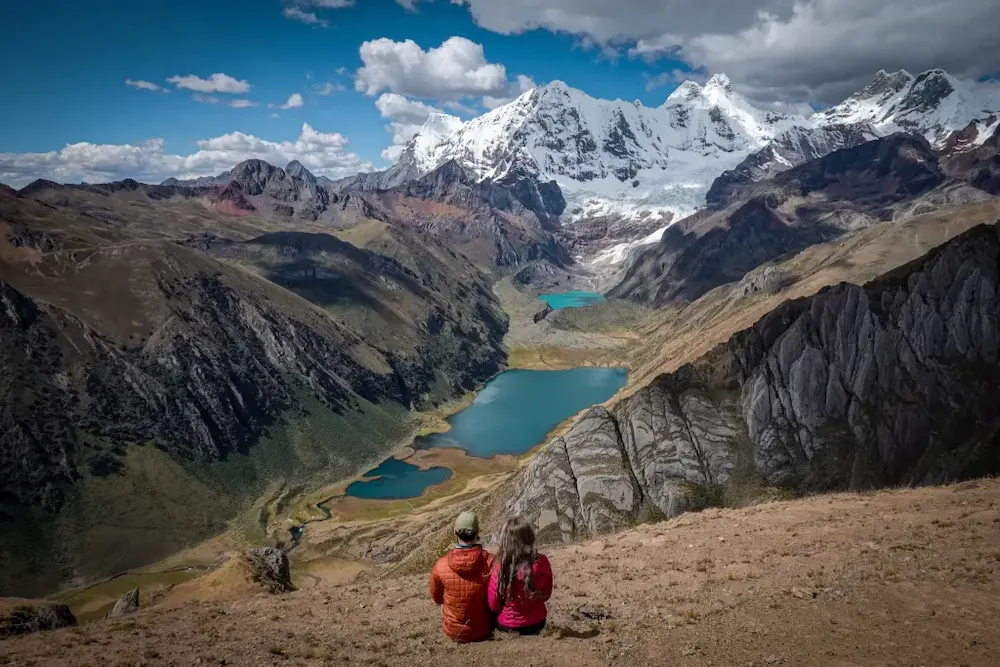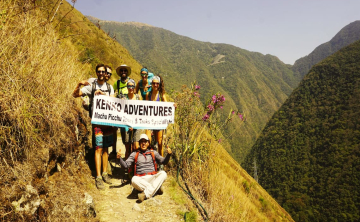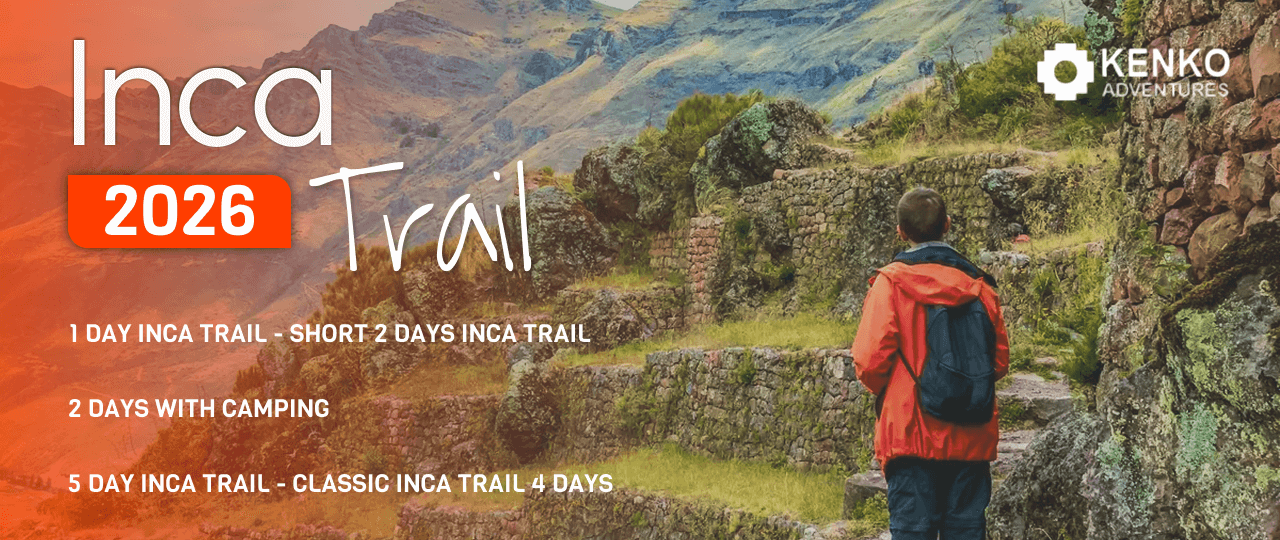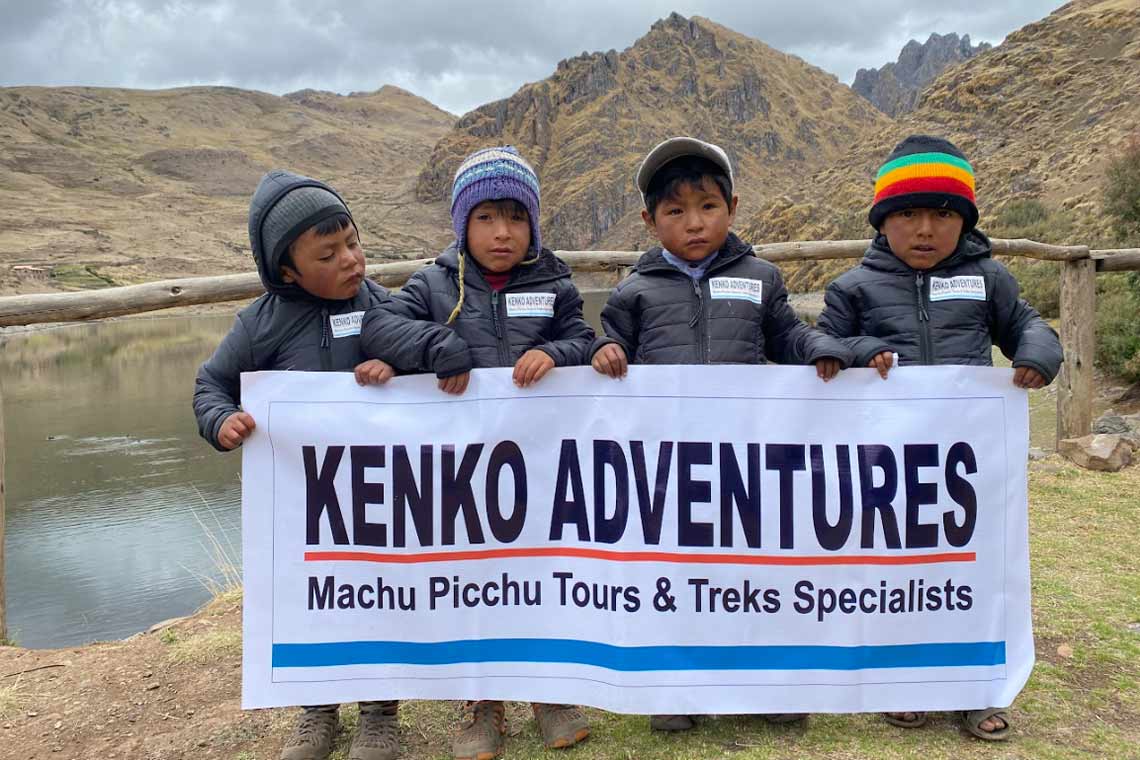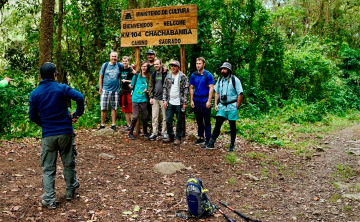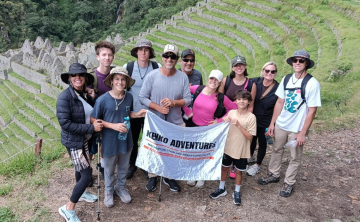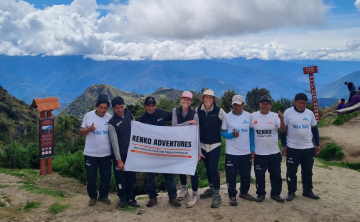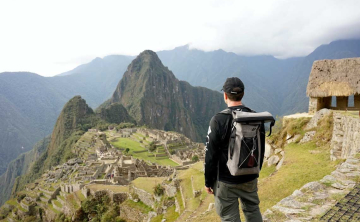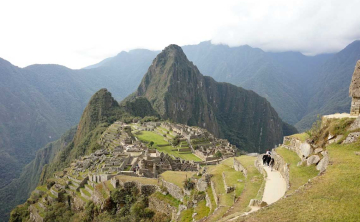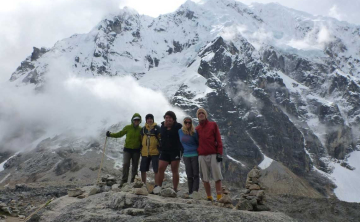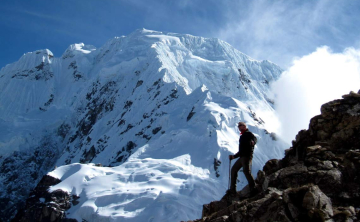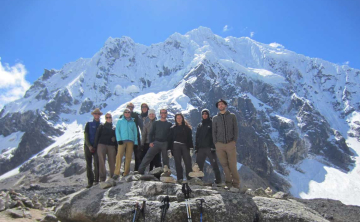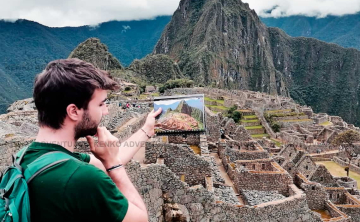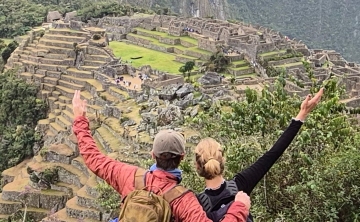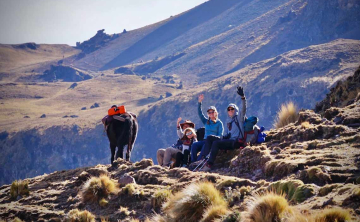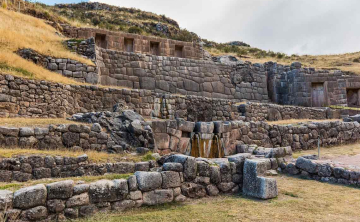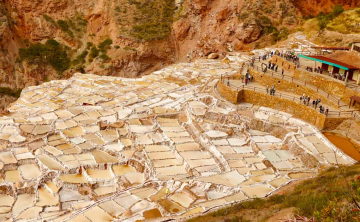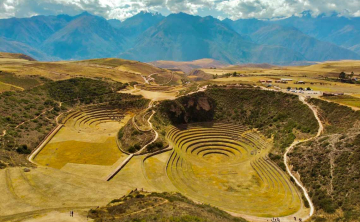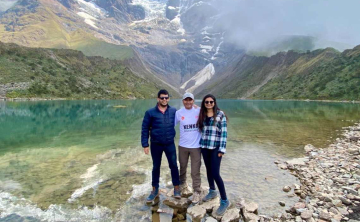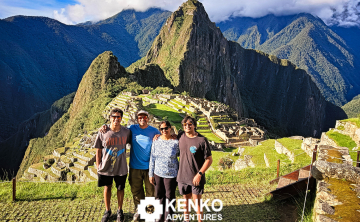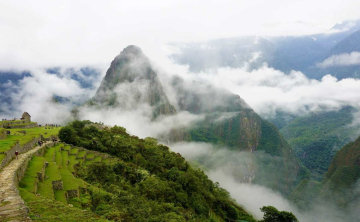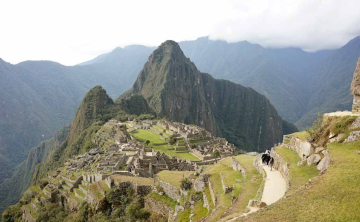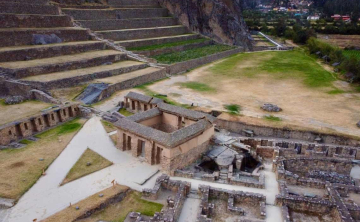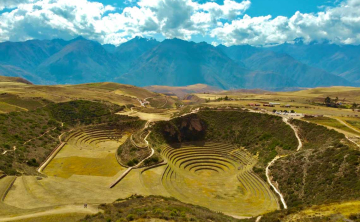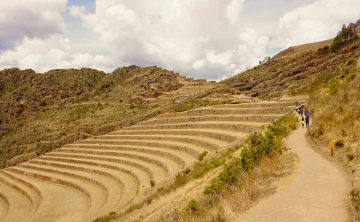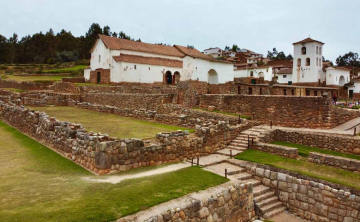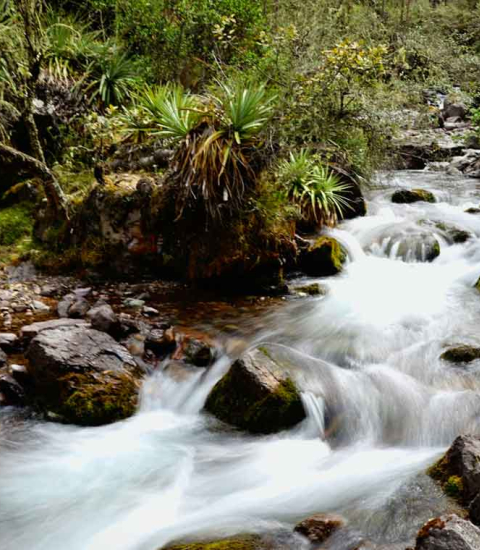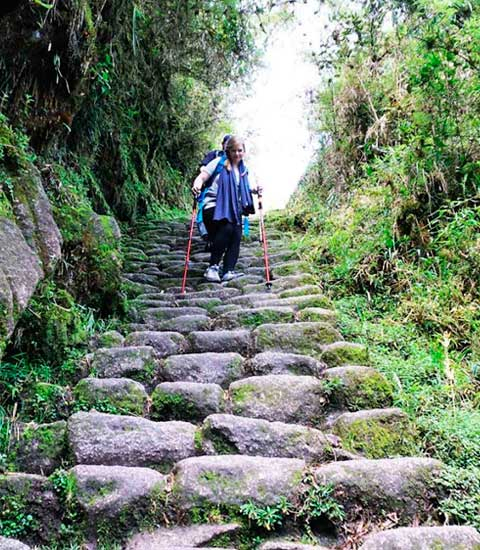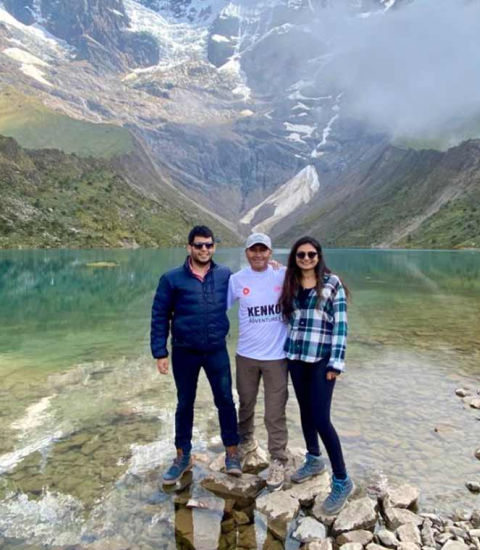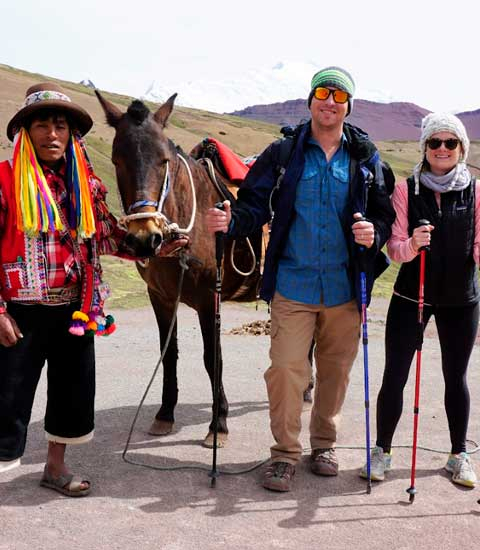We present our real culture life to our clients, hiring people from villages and communities of our region.
Peru Mountain Range (Andes)
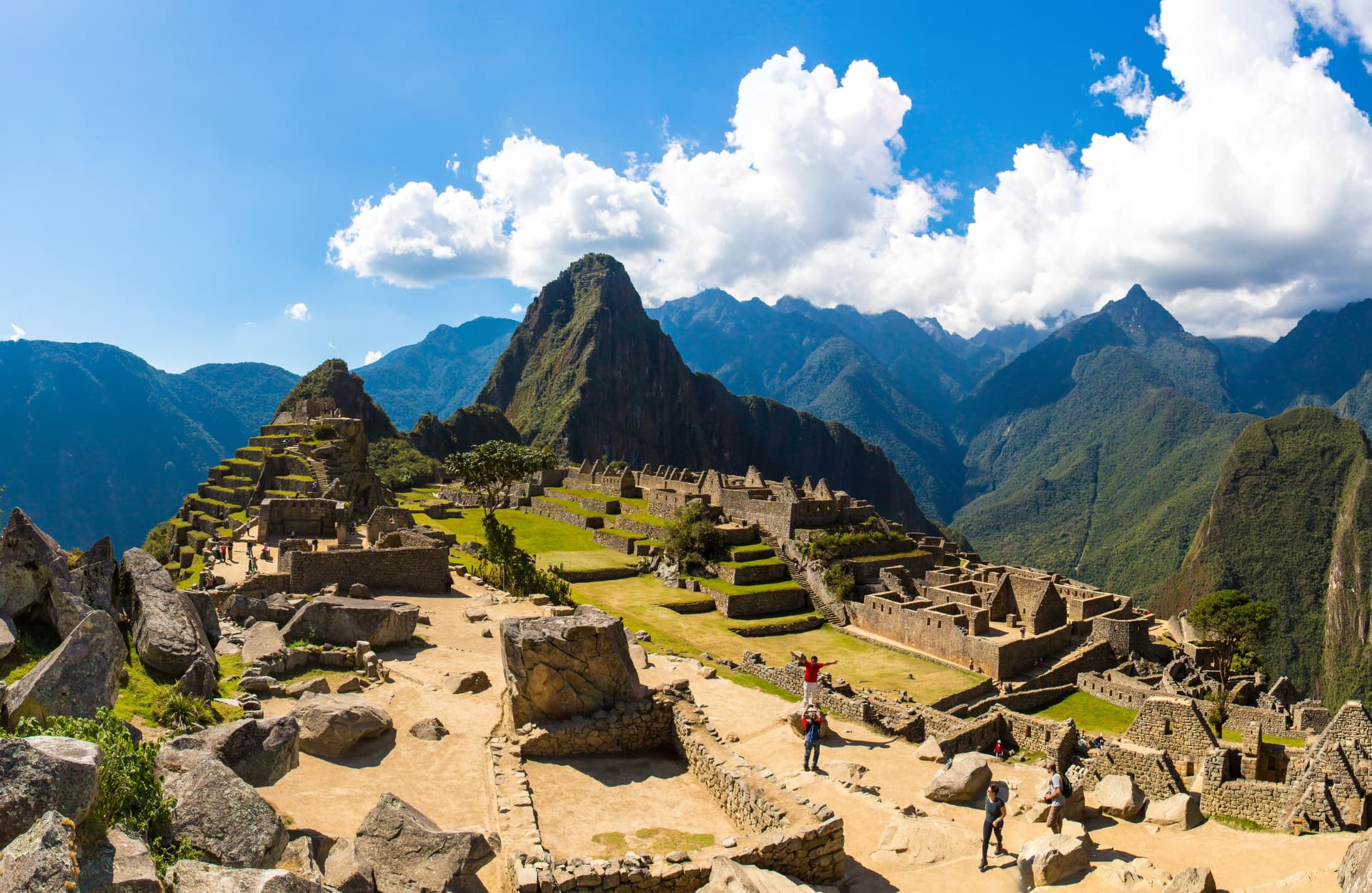
The Incas were an empire that developed during the 11th and 15th century. The first settlers settled in the valley of Cusco and submitted or allied with the original settlers of the valley. They supposedly had no writing but nevertheless their civilization was quite advanced for that time. The capital of the Inca Empire was Cusco, located in the heart of the Peru mountain range, where there are still many archaeological remains from that period.
The Inca Empire covered almost two million square kilometers. To the north it arrived to Pasto (current Colombia) in the south until the river Maule (current Chile) and the West is limited with the Pacific Ocean and the Amazonian forest to the east.
What is the Peru mountain range?
The term “Peru mountain range” refers to the portion of the great Andes mountain chain that runs through Peru. These mountains stretch parallel to the Pacific coast and form a natural divide between the coastal region and the Amazon basin, shaping Peru’s geography in profound ways.
In terms of size, this portion of the Peru mountain range spans vast altitudinal zones (from near sea level to over 6,000 meters above sea level), encompassing an immense variety of ecosystems. These considerable elevations and varying terrains make the Peru mountain range one of the most significant physical features of the country.
Throughout the Andean Mountain Range (also called Inca Mountain range), the Incas had an important presence , this geographical phenomenon exercised a decisive influence in the expansion of the Empire of the Incas. Due to its varied and complex morphology, it still maintains characteristics that were present at that time as:
Multiple micro-climates and their influence on the climate of Peru's whole territory.
The development of large hydrographic regions that drain water.
Distribution of the population and various economic activities.
Somatic and physiological structure of the inhabitants
You might also want to check out: What were the incas known for?
Importance of the mountain range in Peruvian geography
Within Peru’s landscape, the Peru mountain range plays a pivotal role: by acting as a barrier to moisture from the Amazon and as a cooler, dryer zone by the coast, these mountains influence climate, river systems and agricultural zones. Their presence shapes watershed dynamics, directing rivers to both the Pacific and the Amazon, and thus underpins water supply for large parts of the country.
The Peru mountain range also houses glaciers and snow‑capped peaks that feed rivers and reservoirs, providing water for urban centres, irrigation and hydroelectric power. Therefore, this mountain range is not only a scenic wonder but a crucial part of Peru’s infrastructure and ecological health.
Climate and biodiversity across the mountain range
Because the Peru mountain range covers such a variety of altitudes and exposures, the climate changes dramatically from one slope to another. You’ll find everything from relatively moderate valleys to harsh, glaciated peaks and arid high plateaus. These gradients create layered ecosystems where flora and fauna adapt to very specific niches.
The biodiversity of the Peru mountain range is significant: these Andean zones are part of the Tropical Andes biodiversity hotspot, one of the richest on Earth. Endemic species thrive here, and many high‑altitude ecosystems are fragile and increasingly threatened by climate change, making conservation of the Peru mountain range especially urgent.
Main mountain ranges in Peru
Peru is home to several major mountain chains that make up what we broadly refer to as the Peru mountain range. Each sub-range has its own character, peaks, and landscapes. In this section, we’ll explore the most notable mountain ranges in Peru, including the iconic Andes, Cordillera Blanca, and others that contribute to the country’s incredible topographic diversity.
The Andes
The Peru mountain range is part of the larger Andes mountain system, which spans multiple countries and is the longest continental mountain chain in the world. Within Peru, the Andes serve as the backbone of the land, affecting everything from geology and climate to human settlement and culture.
In this national context, the Peru mountain range plays a central role in connecting different landscapes, from the coastal deserts to the Amazon jungle, while acting as a corridor for ecosystems and human communities shaped by the altitude, terrain and climate of the Andes.
Cordillera Blanca
Within the Peru mountain range, the Cordillera Blanca stands out as a major sub‑range — often described as the highest tropical mountain range in the world. Located in the Ancash region of Peru, the Cordillera Blanca contains more than 60 peaks above 5,700 meters, covered with glaciers and snow year‑round.
As part of the broader Peru mountain range, the Cordillera Blanca is important not just for its dramatic landscapes of peaks and turquoise glacial lakes, but also as a critical water source for surrounding valleys and communities. Its role underscores the ecological and recreational value of the Peru mountain range.
Cordillera Huayhuash
Another spectacular segment of the Peru mountain range is the Cordillera Huayhuash. While smaller than the Cordillera Blanca, it is equally dramatic, rising to heights such as the 6,635 meter peak of Yerupajá. The region offers some of the most remote and pristine trekking in the Peru mountain range.
For travellers exploring the Peru mountain range, Huayhuash represents a more intimate experience of high mountain wilderness: fewer crowds, steep alpine vistas, glacial lakes and rugged terrain. It demonstrates just how diverse and under‑explored parts of the Peru mountain range can be.
Other notable ranges: Vilcabamba, Vilcanota and more
Beyond the major sub‑ranges, the Peru mountain range includes lesser‑known but significant chains like the Vilcabamba mountain range (in the Cusco region) and the Cordillera Vilcanota (spanning Cusco‑Puno), among others. These ranges expand the reach, diversity and complexity of the Peru mountain range as a whole.
These additional ranges contribute to the rich mosaic of high‑altitude landscapes in Peru: deep valleys, glaciers, high lakes, indigenous communities and cultural traditions all interwoven. Including them in your understanding of the Peru mountain range ensures a fuller picture of this mountainous network.
You might also want to check out: Celebration of day of the dead in Peru
Top peaks in the Peru mountain range
The Peru mountain range is crowned by some of the highest and most impressive peaks in South America. These summits are not just geological wonders they’re cultural landmarks and natural sanctuaries. Here, we take a closer look at the most iconic mountains in Peru, their heights, significance, and the experiences they offer.
Huascarán: Peru’s highest mountain
Within the Peru mountain range, the highest point in the country is Huascarán, located in the Cordillera Blanca and rising to 6,768 meters above sea level. This peak is a major landmark in the Peru mountain range and attracts mountaineers and nature‑lovers alike.
Huascarán not only embodies the vertical grandeur of the Peru mountain range but also serves as a natural glacier‑source and scenic icon. Its surroundings offer challenging climbs and awe‑inspiring views, making it a central feature for anyone exploring the Peru mountain range.
Alpamayo: the most beautiful mountain in the world
Another renowned peak within the Peru mountain range is Alpamayo, often hailed as one of the most beautiful mountains in the world because of its sharply defined pyramid shape and icy flanks. Located in the Cordillera Blanca, Alpamayo attracts climbers and photographers drawn to the dramatic side of the Peru mountain range.
For visitors to the Peru mountain range seeking aesthetic and adventurous experiences, Alpamayo encapsulates the blend of extreme altitude, sculpted ice, and pristine mountain wilderness — making it a representative highlight of the mountain range’s appeal.
Ausangate: sacred mountain of the Incas
The peak Ausangate (roughly 6,372 meters) is another key feature of the Peru mountain range, not only for its altitude but also for its cultural significance among Quechua‑speaking communities who regard it as a sacred mountain (“Apu”). Exploring the Peru mountain range via Ausangate brings together natural grandeur and deep human tradition.
This mountain reminds us that the Peru mountain range is more than just a set of peaks — it is a landscape interwoven with history, spirituality and indigenous world‑views. Trekking here in the Peru mountain range offers not just physical challenge but meaningful cultural connection.
Best hiking and trekking routes in the Peru mountain range
For adventurers and nature lovers, the Peru mountain range offers some of the best trekking and hiking opportunities in the world. With routes ranging from beginner-friendly to extreme high-altitude circuits, this section introduces you to the most scenic and rewarding trails found within Peru’s highlands.
Santa Cruz trek in the Cordillera Blanca
Among the most accessible but still spectacular experiences in the Peru mountain range is the Santa Cruz Trek in the Cordillera Blanca. This multi‑day hike traverses glacial valleys, high mountain passes and pristine lakes, providing a direct immersion into the high‑altitude environment of the Peru mountain range.
For those wanting to explore the Peru mountain range in depth, this trek offers a balance of challenge and accessibility: you’ll feel the altitude, witness towering peaks and stay within a region equipped for trekking, all while experiencing the unique landscapes of the mountain range.
Huayhuash Circuit: a high‑altitude adventure
A more demanding route within the Peru mountain range is the Huayhuash Circuit in the Cordillera Huayhuash. This trek takes you deep into the remote core of the Peru mountain range, with high passes often above 4,800 meters, glacial lakes, rugged terrain and fewer crowds than many other routes.
For ambitious trekkers exploring the Peru mountain range, the Huayhuash Circuit is an opportunity to engage with wild, dramatic mountain landscapes. It challenges the body and inspires the mind, offering one of the most authentic “remote mountain range” experiences in Peru.
Ausangate trek: glaciers, hot springs and alpacas
The trek around Ausangate is another premier route in the Peru mountain range. It combines high mountain passes, glacial views, hot springs, colourful alpine lakes and close encounters with alpaca and vicuña herds in their high‑altitude habitats.
Visiting the Peru mountain range via the Ausangate trek allows you to experience both the raw nature of the mountains and the cultural tradition of Andean highland communities. It’s a journey through the heart of the Peru mountain range that blends geology, wildlife and indigenous lifestyle.
You might also want to check out: 20 fascinating facts about Inca Culture
Culture and traditions in the Peru mountain range
The Peru mountain range is not just a collection of peaks and valleys — it’s a living cultural landscape. Indigenous communities have called these mountains home for centuries, preserving traditions, languages, and rituals deeply connected to the land. In this section, we explore the human side of the mountains.
Indigenous communities living in the highlands
The Peru mountain range is home to numerous indigenous communities—mainly Quechua and Aymara speaking—who have lived for centuries in high‑altitude villages, adapting their agriculture, livestock and daily life to the challenges of mountain living. These communities add human depth to what might otherwise be seen as purely physical landscapes.
For these highland peoples, the mountains of the Peru mountain range are not just terrain but living entities. Their cultural practices, festivals, and world‑views deeply connect to the mountains, and exploring this region means engaging with their resilient traditions and ways of life shaped over generations.
Traditional festivals and rituals
Among the cultural expressions of the Peru mountain range are festivals and rituals that honour the land, the mountains and the water. These events reflect the communities’ ongoing relationship with the high peaks and valleys, and show how the Peru mountain range is embedded in local heritage and spiritual cosmology.
In many parts of the Peru mountain range, ancient trails once used by the Incas and pre‑Incas become pilgrimage routes or ceremonial pathways. The presence of the mountains is central to these practices, emphasising that the Peru mountain range is also a cultural landscape as much as a geographical one.
Ancient Inca routes and archaeological sites
The Peru mountain range also carries the legacy of ancient civilizations: terraces carved into steep slopes, paths that connected highland communities, and archaeological sites that reveal how early peoples lived in and revered the mountains. These human imprints elevate the Peru mountain range from natural wonder to historical treasure.
Exploring the Peru mountain range thus becomes more than a trek or view — it’s an encounter with the layers of human history etched into the high terrain. You find that the mountain range shaped not only the physical environment but the social, spiritual and technological life of its inhabitants.
In addition to being a civilization with a polytheistic religion, the Incas had a special relationship with the mountains and snowed peaks in the mountain peaks since they knew that their existence in these inhospitable lands was possible thanks to these considered sacred beings. They called them "Apus" and the Incas offered them different types of tributes, even many human sacrifices in their honor.
Machu Picchu is located in a part of the eastern slope of the Central Cordillera of the Andes (part of the Inca mountain range), here one can observe the special care that the Incas had with the environment in which they settled, without disturbing the essence and general aspect of the site and its surroundings, achieving a masterpiece of architecture and engineering.
You might also want to check out: Inca calendar: Solar alignments at Machu Picchu
How to visit the Peru mountain range
Planning a trip to the Peru mountain range requires more than just choosing a trail. You’ll need to think about timing, altitude, gear, and sustainability. This section covers essential tips for traveling responsibly and safely through Peru’s mountainous regions, ensuring a rewarding and respectful experience.
When to go: best seasons for travel and hiking
To get the most out of the Peru mountain range, timing your visit matters. Generally, the dry season (roughly from May to September) offers clearer skies, more stable weather and better vistas across high‑altitude terrain. These conditions make mountain treks safer and more visually rewarding.
However, because the Peru mountain range covers many regions, each with their micro‑climate, it’s wise to check conditions for the specific range you plan to visit. High altitude always brings risk and challenge, so choosing the right season is part of preparing well for the mountain range.
Tips for altitude sickness and preparation
Exploring the Peru mountain range means dealing with high altitudes, rapidly changing weather and strenuous activity. Good preparation is essential: physically, mentally and logistically. Allow time to acclimatize, stay well‑hydrated, and avoid pushing too hard too soon.
Also consider equipment and support: appropriate clothing, reliable gear, a guide if needed, and awareness of signs of altitude sickness. Visiting the Peru mountain range safely depends on respect for mountain conditions, personal limits and thoughtful planning.
Sustainable tourism and responsible travel
As you explore the Peru mountain range, practice responsible travel. The ecosystems, glaciers, water sources and local communities of the mountain range are vulnerable to climate change, over‑tourism and poor infrastructure. Each visitor bears some responsibility for their impact.
Supporting local communities, choosing low‑impact routes, sticking to marked trails, carrying out all waste and being culturally respectful are all ways to help preserve the Peru mountain range for future travellers. Sustainable tourism ensures the mountain range remains a treasure, not a casualty.
Final thoughts on exploring the Peru mountain range
The geography of the area also involved a complex network of roads and infrastructure such as the bridges in order to communicate with different places of the Empire across the Peru mountain range, this network of roads is called Qhapaq Ă‘an, where the current Inca Trail tour goes through, but it is a very small part of it, however, this section is famous because it leads to Machu Picchu. However, the actual Inca Trail or Qhapaq Ă‘an covered the entire territory of the Inca Empire
